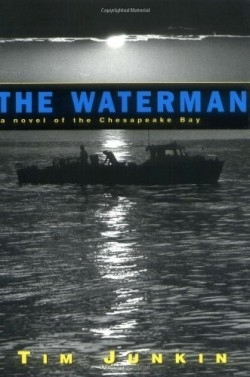The Waterman
The prose smells of salt water and diesel fuel in Tim Junkin’s first novel, a coming-of-age story set on the Chesapeake Bay in the early 1970s. Young Clay Wakeman, his parents dead, returns from college to follow in his father’s wake, making his livelihood sinking pots into the salty waters of the bay and pulling them up laden with crabs.
It is a moody book full of shadows, impending doom, the ineluctability of fate. The sections are preceded by gloomy quotations from Dylan Thomas. Clay’s family history is painful, his best friend is a Vietnam veteran crippled by alcohol, and the bay is poisoned by farm run off. Clay is diligent but detached as he struggles against poverty, nature and watermen who have given up crabbing in favor of the more profitable drug running trade. The casual use of marijuana heightens the mood of pervasive dissociation and the sense of impending storm. When the storm hits, it is Hurricane Agnes, an actual event that devastated parts of the coastline in 1972.
The plot is precisely crafted, almost to a fault, as if Junkin imagined his novel as a series of visual scenes, with fades and cuts and camera angles. His prose is almost uniformly graceful even as it wanders from the sparse “Clay liked the stiff breeze and the sound of the sailboat halyards ringing,” to the poetic: “Clay, satisfied, turned to watch the snow geese swirling over the amber land. White petals free-falling, awhirl in a vortex.”
The Waterman is a somewhat conventional story, but it is competently told in a manner evocative of its time and place.
Reviewed by
Rich Wertz
Disclosure: This article is not an endorsement, but a review. The publisher of this book provided free copies of the book to have their book reviewed by a professional reviewer. No fee was paid by the publisher for this review. Foreword Reviews only recommends books that we love. Foreword Magazine, Inc. is disclosing this in accordance with the Federal Trade Commission’s 16 CFR, Part 255.

